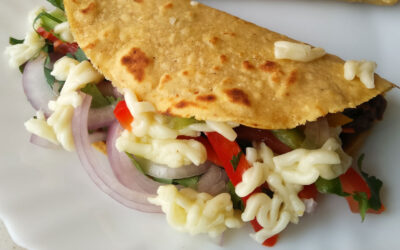Kitchens that have no dining facility, no seats, no servers are called ghost/dark/cloud kitchens. Orders are received through an App or the customer calls the kitchen directly/internet-based ordering.
Cloud Kitchens – the future
Such kitchens are the future of the eating-out industry. Such facilities are now are popular across India. Located in low-rent areas, they maximize a restaurant’s ability to service online orders. They can also operate multiple brands utilizing the same kitchen and resources. Not only individual aspirants but food aggregators such as Zomato, Swiggy, Ola have now cloud kitchens where they provide good space utilization, common storage, refrigeration, and lockers for staff.

This means more market share and revenue at minimal added costs. They are economically more profitable than dining in a restaurant.
Present COVID-19-impacted world, cloud/ghost/virtual/dark kitchens have taken an even more prominent role. While there can be multiple types of cloud kitchens, in the simplest terms a cloud kitchen is a kitchen that accepts orders only through phone-in or online ordering systems. It is a base kitchen that delivers food to the customers’ doorstep. There are some cloud kitchen-backed brands that may have small physical outlets but essentially are backed by a base kitchen or a chain of cloud kitchens. Among the advantages a cloud kitchen model provides is a low rent to revenue ratio.
Characteristically, these kitchens are based in non-premium locations that do not command a high rental. Since there is no dine-in facility, the space required to operate is reduced by 75-80 percent compared with a traditional premium restaurant. Cloud kitchens also save on front-of-the-house expenses. They are not limited by seats and do not have to turn back customers due to restaurants running at full capacity. They also have the opportunity to potentially expand at a faster rate as a result of low CAPEX requirements.
The online food delivery market, which was valued at INR 45.58 billion in 2017, is expected to grow at a compounded annual growth rate of about 38.08 percent between 2018 and 2023, according to a report by Research on Global Markets. Of the total market size, dark kitchens constituted 30 percent in 2017, the report said.
In the COVID-19 storm, the dine-in restaurant industry has suffered significantly with the initial 120-day shutdown and followed now by demand failure as patrons continue to stay home. It’s a reality that many restaurants will go out of business. Every restaurant big or small is in survival mode. In the short term, it will become critical for traditional restaurants to pivot to delivery for survival. Even if they do make the pivot, many still will not make it. In the current environment and with the continued uncertainty of the COVID-19 pandemic, cloud kitchens or food and beverages outlets backed by a cloud kitchen network have a better chance of survival and are likely the future of the food industry.

